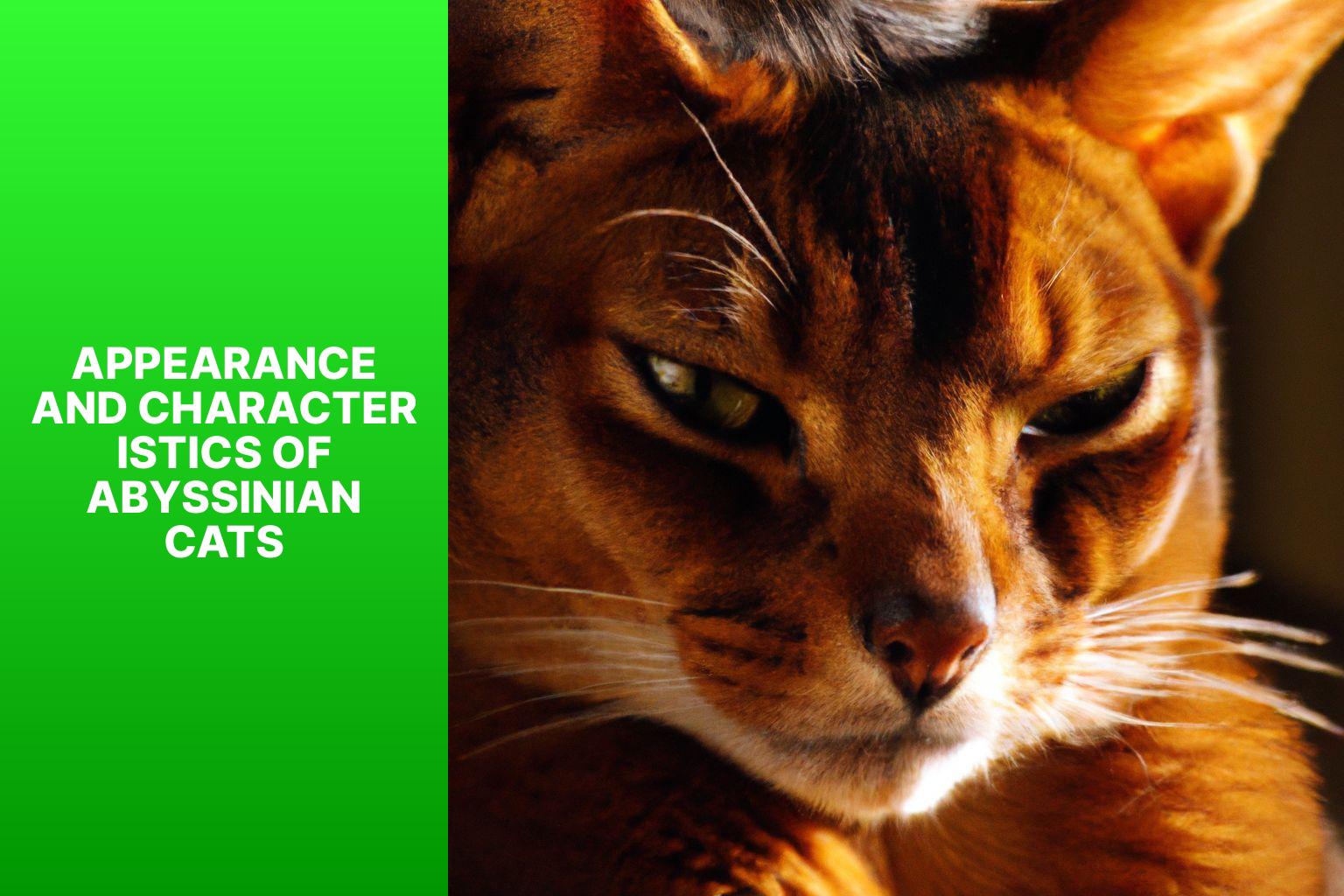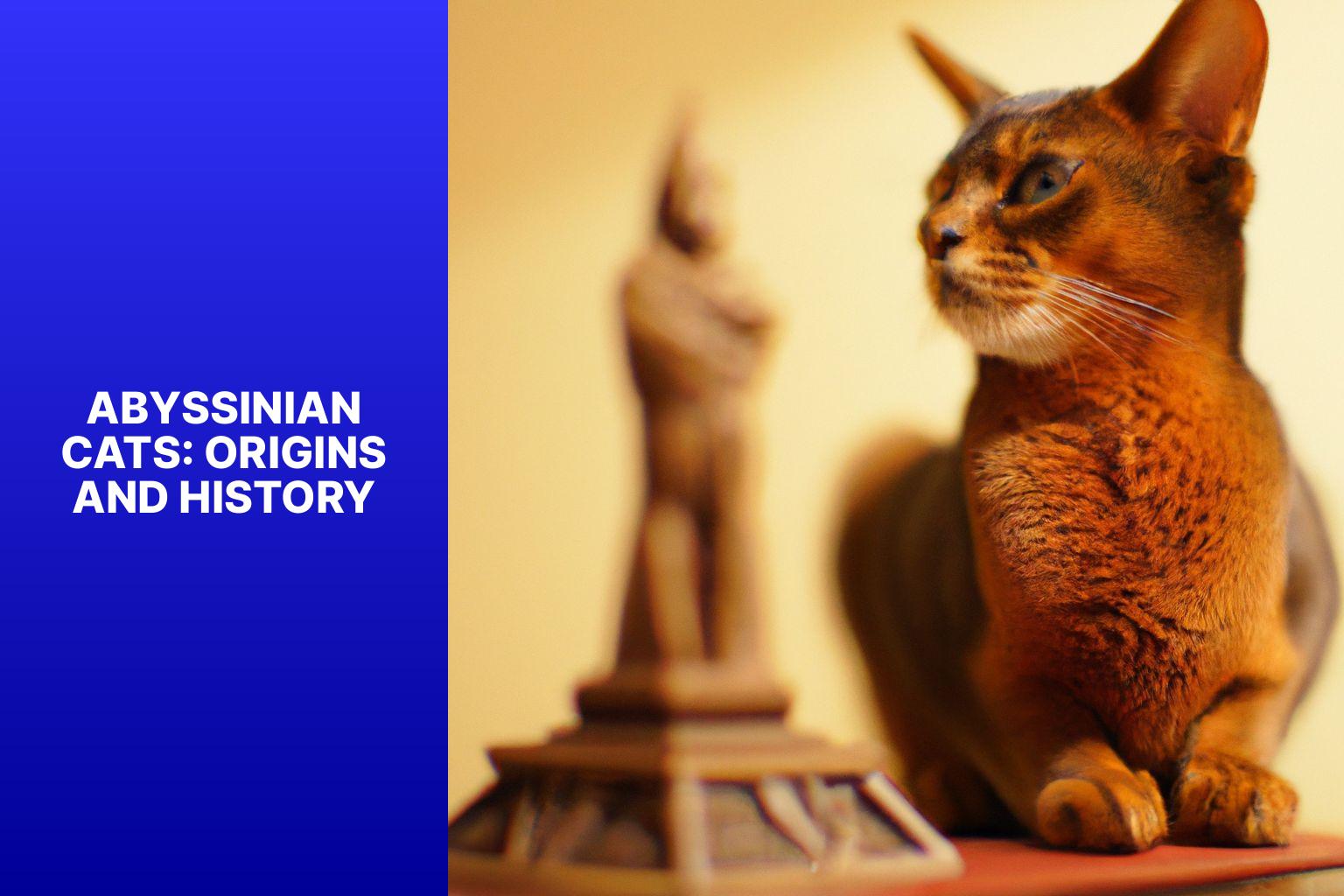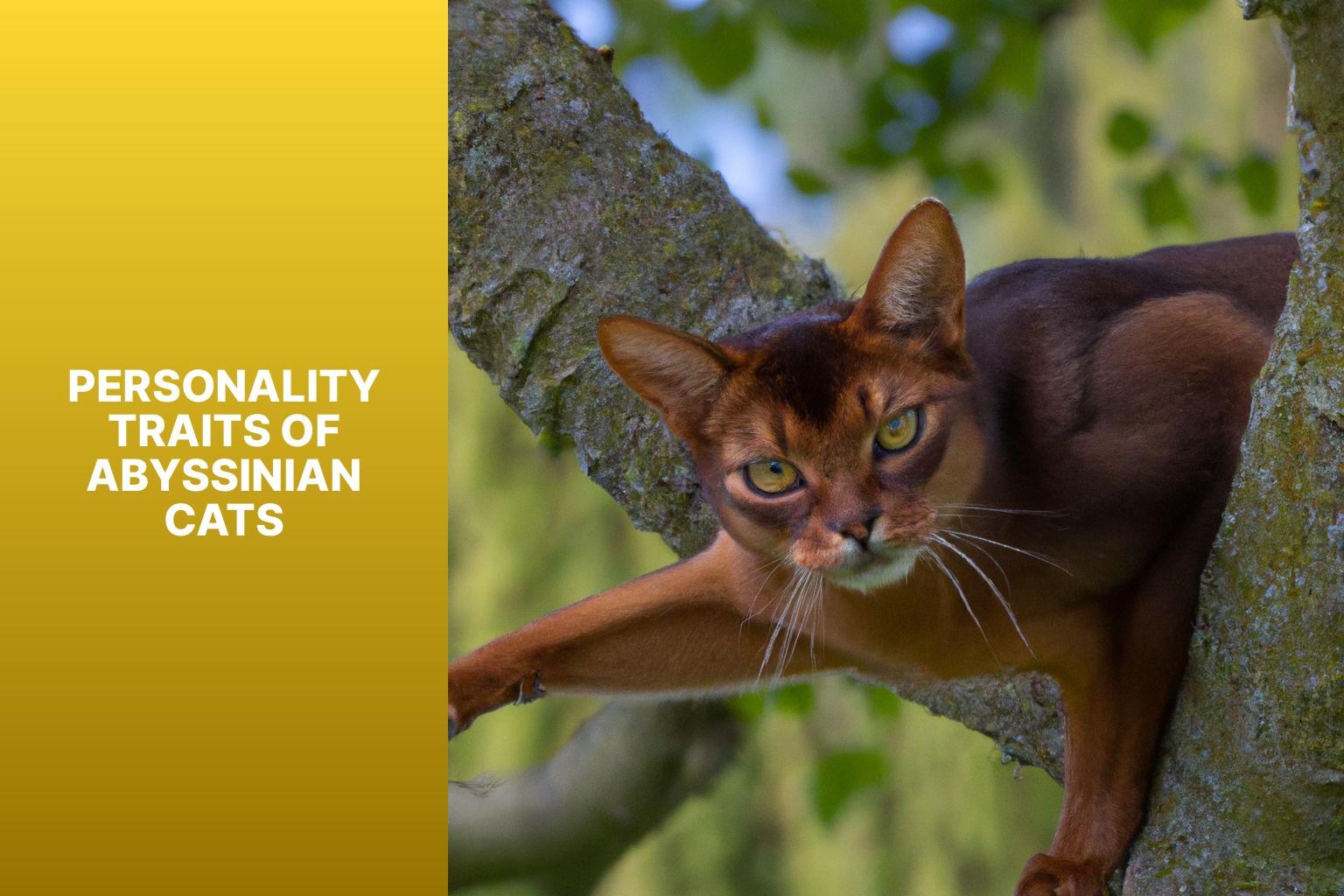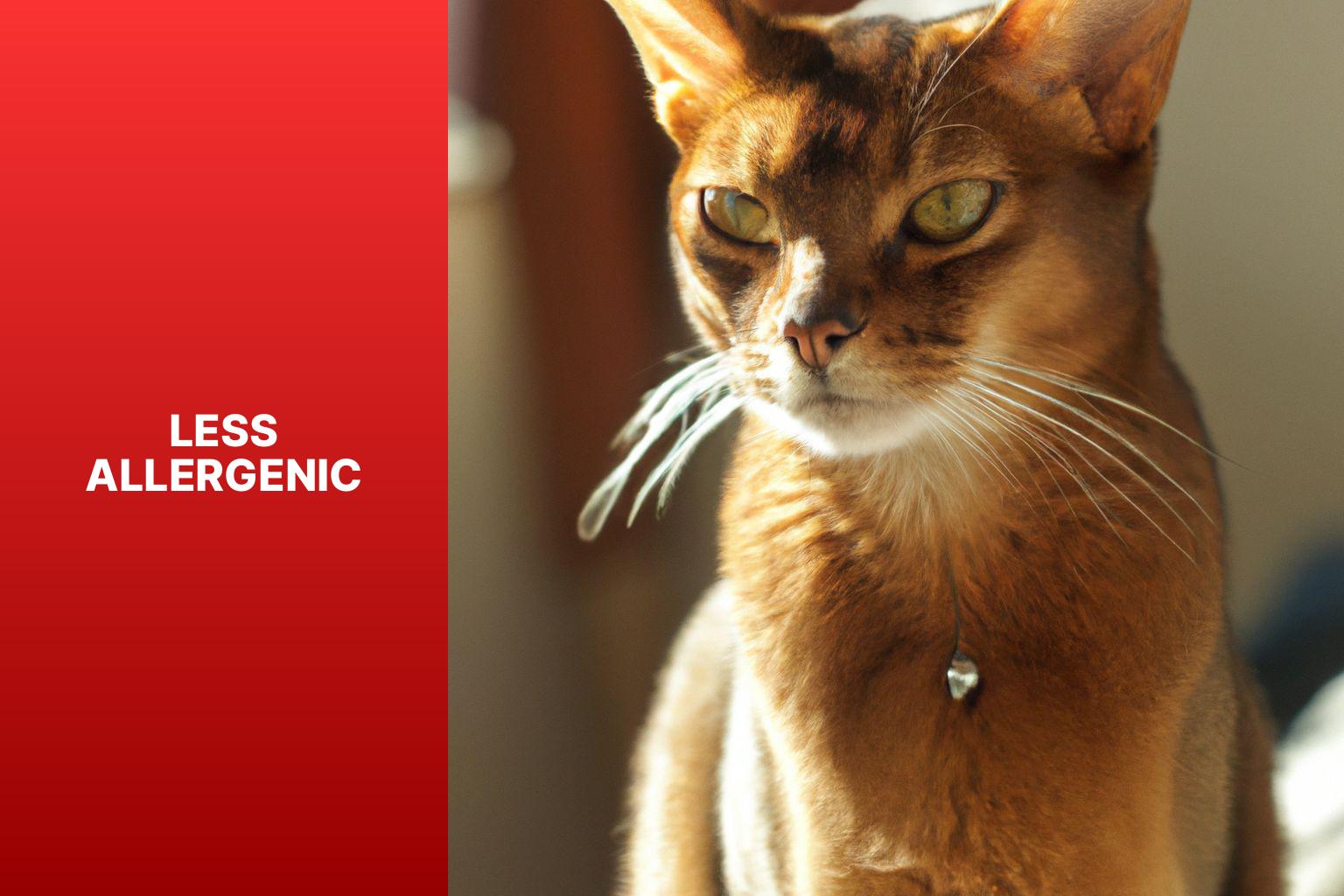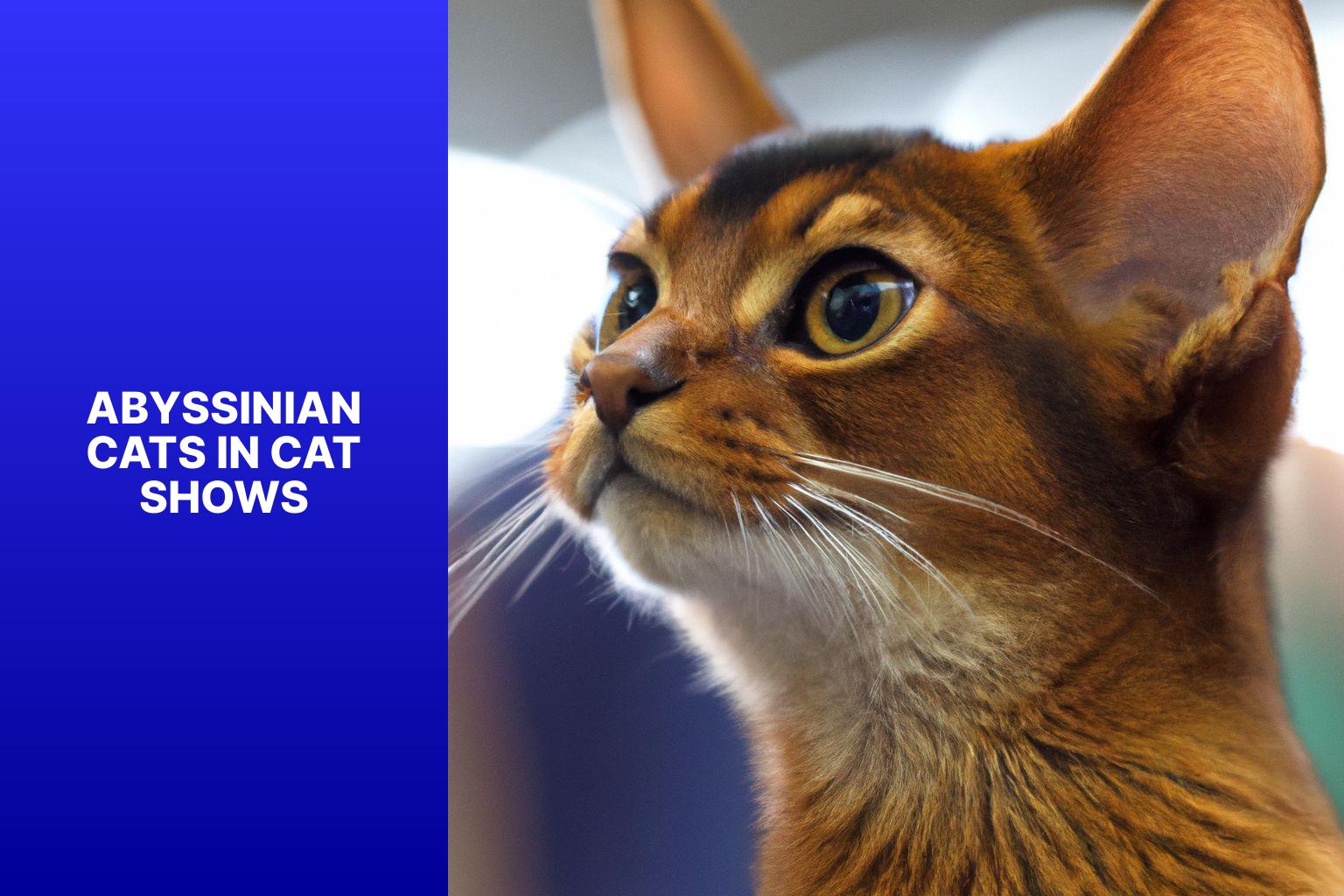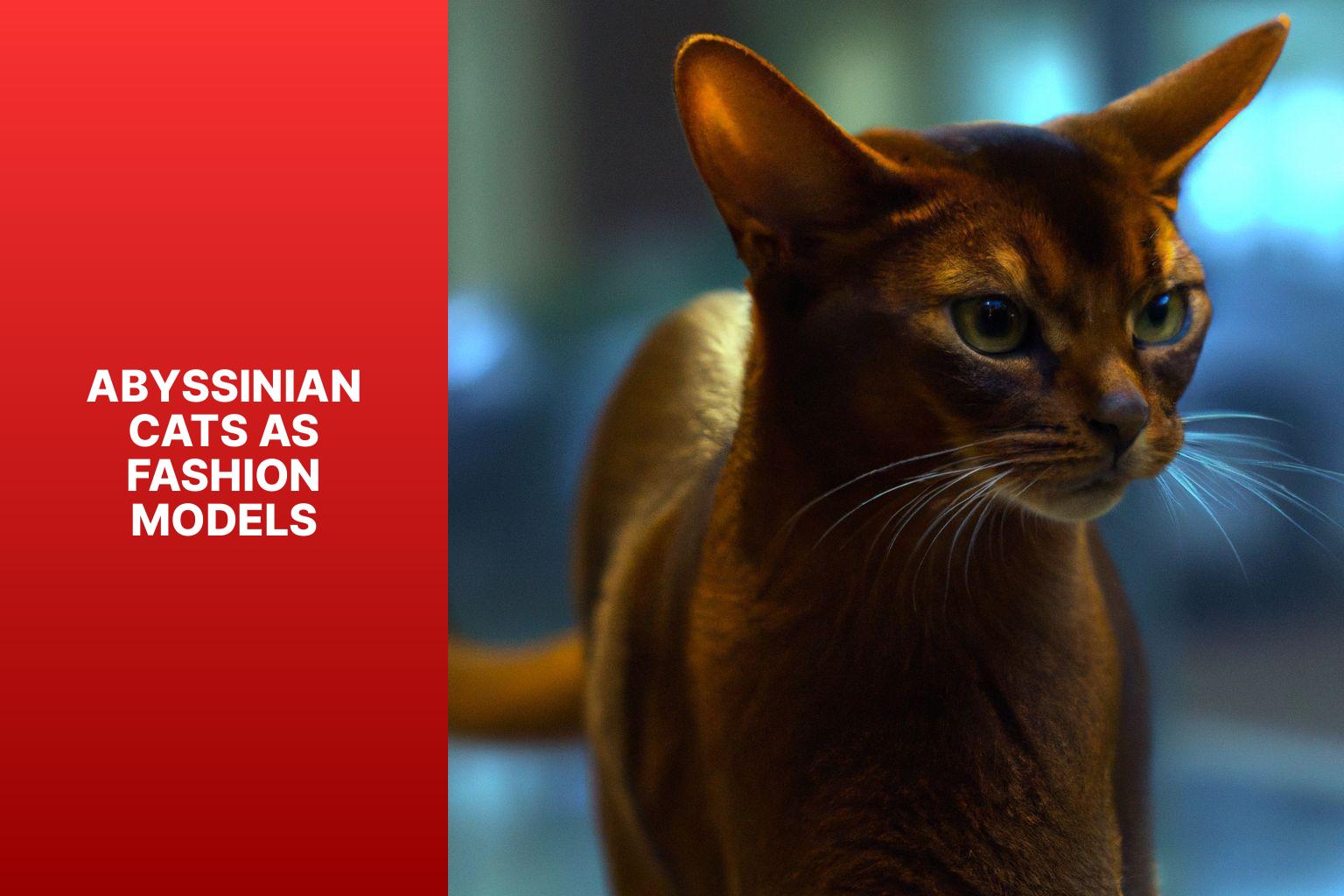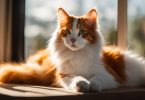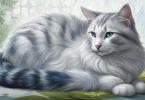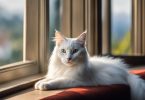Abyssinian cats are a fascinating and unique breed known for their striking appearance, captivating history, and distinctive personality traits. This article will provide an insightful look into the world of Abyssinian cats, shedding light on their appearance, origins, personality, care, and common health issues.
Abyssinian cats possess a distinct and captivating appearance, characterized by their coat color, body structure, and size. Their coat, known for its ticked pattern, comes in various colors, including ruddy, red, blue, and fawn. The unique coat type of Abyssinians is short, soft, and dense, providing them with a luxurious feel.
The origins of Abyssinian cats can be traced back to ancient Egypt, where they were highly revered and considered sacred. Throughout history, these cats gained recognition and popularity, eventually becoming an officially recognized breed. Understanding their historical journey adds depth to their enchanting presence in the modern world.
Abyssinians are known for their playful and active nature, making them highly entertaining companions. Their intelligence and curiosity drive them to explore their surroundings, always seeking new adventures. Abyssinians are known to be social and affectionate, forming strong bonds with their human family members.
Proper care plays a crucial role in maintaining the health and well-being of Abyssinian cats. This section will delve into essential aspects of their care, including diet and nutrition, grooming and coat care, as well as the importance of providing them with adequate exercise and physical activity.
While Abyssinians are generally a healthy breed, there are a few health issues that they may be prone to. This section will focus on some of the common health problems that Abyssinians may face, including Progressive Retinal Atrophy (PRA), Renal Amyloidosis, and Gingivitis, emphasizing the importance of regular veterinary check-ups and proper dental care.
By exploring the appearance, history, personality, care, and health of Abyssinian cats, this article aims to provide a comprehensive understanding of this remarkable feline breed. Whether you are considering adding an Abyssinian cat to your family or simply have a curiosity about these majestic creatures, this article will provide valuable insights into the world of Abyssinians.
- Abyssinian cats are a unique breed known for their distinctive coat color and type, as well as their body structure and size.
- Originating from ancient Egypt, Abyssinian cats have a rich history and are recognized as a breed with special significance.
- These cats possess playful and active nature, high intelligence, curiosity, and enjoy social interaction and affection.
- Caring for Abyssinian cats involves providing a balanced diet, regular grooming and coat care, and engaging them in exercise and physical activity.
- Common health issues in Abyssinian cats include progressive retinal atrophy, renal amyloidosis, and gingivitis which require proper care and attention.
- With proper care, Abyssinian cats can have a long lifespan and are less allergenic compared to other cat breeds.
- Abyssinian cats have beautiful eye colors that add to their charm and appeal.
- They are often showcased in cat shows and have even gained fame as fashion models.
Appearance and Characteristics of Abyssinian Cats
Photo Credits: Www.Catcornerblog.Com by Robert Hernandez
Abyssinian cats are not just any ordinary feline companions. Their appearance and characteristics make them truly extraordinary. From their stunning coat colors and types to their unique body structure and size, these mesmerizing creatures have a lot to offer. Join me as we dive into the vibrant world of Abyssinian cats, learning about their distinct coat patterns and the physical traits that set them apart. Get ready to be captivated by these enchanting felines!
Coat Color and Type
When it comes to Abyssinian cats, the coat color and type are essential factors that contribute to their distinct appearance. With a variety of coat colors, including ruddy, red, blue, fawn, lilac, sorrel, chocolate, cinnamon, silver, and cream, each Abyssinian cat showcases its unique charm and beauty. These cats have a short and dense coat, which not only adds to their sleek and elegant look but also helps maintain it.
One of the distinguishing features of Abyssinian cats is their ticked pattern, which is characterized by multiple bands of color on each hair. This pattern creates a mesmerizing shimmering effect that sets them apart from other cat breeds. Regardless of whether you prefer the vibrant ruddy coat or the soft lilac coat, Abyssinian cats offer a wide range of coat color options to suit different preferences. With their short and dense coat and striking ticked pattern, these cats possess a distinct charm and enhance their overall appearance.
Body Structure and Size
The body structure and size of Abyssinian cats are notable. They have a medium-sized and muscular physique, weighing between 6 to 10 pounds (2.7 to 4.5 kilograms) on average. Their body length is medium, resulting in a slightly long and lean appearance. The head of Abyssinian cats features a wedge-shaped structure with slightly rounded contours, enhancing their distinct look. They possess large and alert ears that are set wide apart. Their eyes, usually gold or green in color, are almond-shaped and expressive.
Abyssinian cats also possess slim legs that are proportionate to their body, showcasing well-developed muscles. Their oval-shaped paws are small to medium in size. The tail of Abyssinian cats is long and tapered, distinguished by a slightly thick base.
This table offers a comprehensive understanding of the body structure and size of Abyssinian cats, providing detailed information about their physical characteristics.
Abyssinian Cats: Origins and History
Photo Credits: Www.Catcornerblog.Com by Richard Hill
Abyssinian Cats: Origins and History – Unveiling the intriguing past of Abyssinian cats, from their origins in ancient Egypt to their recognition as a distinguished breed. Delve into the captivating journey of these feline companions as we uncover their mysterious beginnings and their rise to prominence in the world of domestic cats. Get ready to be whisked away into the fascinating world of Abyssinian cats, where ancient history intertwines with modern admiration.
Origins in Ancient Egypt
The Abyssinian cat’s origins can be traced back to Ancient Egypt. These cats have a long history dating back thousands of years. Ancient Egyptians held cats in high regard, considering them sacred. Abyssinian cats, known for their distinctive ticked coat and elegant appearance, were frequently featured in ancient Egyptian art.
In the late 19th century, Abyssinians were introduced to Europe and gained popularity as exotic pets. They were given the name “Abyssinian” because it was believed they originated from Abyssinia, which is now modern-day Ethiopia. Recent research suggests that their ancestors may have come from coastal regions of the Indian Ocean and Southeast Asia.
Regardless of their precise origins, Abyssinian cats have always fascinated people with their beauty and mysterious past. Their unique coat pattern, reminiscent of wild African cats, adds to their charm. These cats possess a strong and agile body structure, making them superb climbers and hunters.
Understanding the origins of Abyssinian cats allows us to appreciate their ancient lineage and the significant role they played in ancient Egyptian culture. Even today, they remain popular companions due to their playful nature and intelligence. So, the next time you encounter an Abyssinian cat, keep in mind their intriguing history connecting them to the pharaohs of ancient Egypt.
Recognition as a Breed
| Abyssinian Cats | Origin | Abyssinian cats originated in Ancient Egypt and were treasured as sacred cats. They were often depicted in Egyptian art and hieroglyphs. |
| Recognition | International Cat Association (TICA) | The International Cat Association (TICA) officially recognized the Abyssinian cat breed in 1979. TICA is one of the major cat registries that sets standards for different cat breeds. |
| Recognition | The Cat Fanciers’ Association (CFA) | The Cat Fanciers’ Association (CFA) recognized the Abyssinian cat breed in 1984. Both TICA and CFA acknowledge the breed’s unique characteristics, including its ticked coat and vibrant personality. |
| Recognition | Other Cat Associations | In addition to TICA and CFA, the Abyssinian breed is recognized by various other cat associations worldwide, including the Fédération Internationale Féline (FIFe) and the Governing Council of the Cat Fancy (GCCF). |
The recognition of Abyssinian cats as a breed by prestigious cat associations has solidified their status as a distinct and desirable breed. Breeders and cat enthusiasts appreciate their unique characteristics, such as their beautiful ticked coat, playful nature, and intelligence. Abyssinians continue to be cherished and celebrated in cat shows and are beloved companions in many households.
Personality Traits of Abyssinian Cats
Photo Credits: Www.Catcornerblog.Com by Kenneth Martin
Abyssinian cats are known for their distinct set of personality traits that set them apart from other feline companions. In this section, we’ll dive into what makes Abyssinian cats truly unique. Discover their playful and active nature, their intelligence and curiosity, and their remarkable social interaction and affection. Get ready to uncover the captivating qualities that make Abyssinian cats such remarkable and beloved companions.
Playful and Active Nature
The Abyssinian cat is renowned for its playful and active nature, which is evident in several aspects:
Engages in interactive play: Abyssinian cats enthusiastically participate in interactive games such as fetch or chasing toys. Their high energy levels make playtime a lively experience.
Jumping and climbing abilities: These cats possess exceptional agility and skill in jumping and climbing. They enjoy exploring their surroundings and can often be observed leaping onto furniture and scaling tall cat trees.
Hunting instincts: Abyssinians have a strong prey drive and love engaging in mock hunting behaviors. They actively pounce on toys or chase small moving objects, displaying their natural instincts.
Loves physical exercise: Regular exercise is crucial for keeping Abyssinians happy and healthy. They require ample physical activity, whether through play sessions or access to a safe outdoor environment.
Curious and adventurous: Abyssinians are naturally curious cats and eagerly investigate new sights, sounds, and smells. They constantly seek new adventures and thrive in environments that provide mental stimulation and exploration opportunities.
Throughout history, Abyssinian cats have been highly prized for their playful and active nature. They even accompanied ancient Egyptians on hunts, showcasing their agility and prowess. Their energetic personalities have made them widely adored pets, bringing immense joy and entertainment to their owners.
Intelligence and Curiosity
Intelligence and curiosity are notable traits in Abyssinian cats. These cats are highly intelligent and have a natural curiosity. They observe their surroundings to gain a better understanding of their environment. Abyssinian cats are known for their problem-solving abilities and can figure out how to access hard-to-reach places or open doors.
Their intelligence and curiosity also make Abyssinian cats highly interactive and playful. They enjoy engaging in interactive play with their owners and can quickly learn tricks and commands. Provide them with mental stimulation through puzzle toys or interactive play sessions to keep their curiosity and intelligence satisfied.
To enhance their intelligence and curiosity, provide toys that mimic prey movements. This will keep them mentally and physically stimulated.
When considering an Abyssinian cat as a pet, take their intelligence and curiosity into account. They thrive in environments with plenty of mental and physical stimulation. If you’re looking for an intelligent and adventurous companion, an Abyssinian cat may be the perfect choice for you.
Create a safe and stimulating environment for them and always provide interactive play sessions to keep their minds sharp and satisfy their natural curiosity.
Social Interaction and Affection
Abyssinian cats are known for their social interaction and affectionate nature. They are friendly and loving, and enjoy human companionship. These cats like to be involved in their owner’s activities and often follow them around the house, showing a genuine interest. Abyssinians are highly sociable and get along well with other pets, including dogs. They are not aggressive or territorial, making them a good fit for multi-pet households.
When it comes to playtime, Abyssinians are quite playful and enjoy interactive toys and games. They particularly love activities that involve their owners, such as puzzle toys or interactive play sessions. These cats are also very affectionate and enjoy being petted and cuddled. Although they may not be traditional lap cats, they do like being close to their owners and will curl up next to them for naps or snuggles.
What’s more, Abyssinians are great with children. Their playful nature and gentle demeanor make them suitable companions for kids. Their ability for social interaction and their affectionate nature makes Abyssinian cats wonderful companions.
Caring for Abyssinian Cats
Caring for Abyssinian cats is a rewarding journey filled with love, companionship, and a few essential responsibilities. In this section, we’ll explore the key aspects of caring for these magnificent felines. From their dietary needs and grooming requirements to the importance of exercise and physical activity, we’ll uncover the secrets to providing optimal care for Abyssinian cats. So let’s dive in and ensure our Abyssinian companions live their best, healthiest lives!
Diet and Nutrition
Abyssinian cats require a well-balanced and nutritious diet to maintain their overall health. Protein is essential for their growth and muscle development. It is important to feed them high-quality cat food that is specifically formulated to meet their nutritional needs. It is crucial to avoid feeding them human food or any toxic substances.
To ensure proper hydration, it is recommended to include both wet and dry food in their diet. It is important to always provide fresh water for them to drink.
In order to support their digestion, it is beneficial to incorporate fiber-rich vegetables and fruits into their diet. It is prudent to consult a veterinarian before introducing new foods.
Controlling portions is key to preventing overeating and maintaining a healthy weight for your Abyssinian cat. Feeding guidelines based on their age and activity level should be followed.
Regular check-ups with a vet are crucial for monitoring their weight, body condition, and overall health. It is always recommended to consult a veterinarian for personalized advice and recommendations specifically tailored to your Abyssinian cat’s diet and nutrition.
Remember that every cat is unique, so their dietary needs may vary. It is important to observe their eating habits, monitor their weight, and make any necessary adjustments to ensure their health and happiness.
Grooming and Coat Care
To properly care for Abyssinian cats, pay attention to their grooming and coat care. Consider these key aspects:
- Brushing: Regularly brush to remove loose hairs and prevent matting. Use a soft brush or grooming mitt to comb through their short, dense coat. This keeps their fur sleek and reduces shedding.
- Bathing: Abyssinians typically don’t need regular baths since they groom themselves. But if they get dirty, use gentle cat shampoo to clean their coat. Rinse thoroughly.
- Nail Trimming: Trim their nails to prevent discomfort and unintentional scratching. Use cat-specific nail clippers and be careful not to cut too close to the quick.
- Eye and Ear Cleaning: Clean their eyes and ears regularly with a moist cotton ball. Avoid harsh substances.
- Dental Care: Maintain good oral hygiene by brushing their teeth with cat-specific toothbrush and toothpaste.
Pro-tip: While grooming is less intensive for Abyssinians than long-haired breeds, establishing a routine from a young age helps them become comfortable and keeps their coat in good condition.
Exercise and Physical Activity
Abyssinian cats require regular exercise and physical activity for their overall health and well-being. Engaging in exercise not only keeps them physically fit but also stimulates them mentally. To encourage play and movement, provide interactive toys such as laser pointers, feather wands, and treat-dispensing puzzles. It is important to set aside daily playtime to interact with your cat and promote activities like running, pouncing, and climbing.
Apart from play, it is essential to incorporate vertical spaces and climbing structures into their environment to satisfy their natural instincts. Adding items like cat trees, shelves, and scratching posts can be beneficial.
Regular exercise not only helps in maintaining a healthy weight but also contributes to muscle tone and flexibility. It also plays a significant role in preventing boredom and behavioral issues.
Let me share an example from my own experience. I am the proud owner of an Abyssinian cat named Milo. Milo absolutely loves playing fetch. Every evening, we spend time playing fetch using a small toy ball. Milo enthusiastically chases and bats the ball, which not only provides exercise but also strengthens our bond.
Common Health Issues in Abyssinian Cats
Did you know that Abyssinian cats can face certain health challenges? In this section, we’ll dive into the common health issues that Abyssinian cats may encounter. From progressive retinal atrophy to renal amyloidosis and gingivitis, we’ll explore these concerns and provide valuable insights into the importance of dental care for our feline friends. Stay tuned to discover the facts, figures, and essential information about the health of Abyssinian cats!
Progressive Retinal Atrophy
Progressive Retinal Atrophy (PRA) is a genetic eye disorder that affects Abyssinian cats. It is characterized by the degeneration of the retina, leading to blindness. PRA is inherited, so cats with affected parents have a higher risk of developing the disease.
PRA in Abyssinian cats usually starts between ages 2 and 5. Early signs include night blindness, difficulty in dim light, and reflective eyes. As the disease progresses, cats gradually lose vision and become blind.
There is no cure for PRA in Abyssinian cats currently. However, genetic testing can identify carriers and reduce the disease’s prevalence in future generations. Regular veterinary check-ups and eye examinations are crucial for early detection and management.
Abyssinian cat owners should be aware of the potential risk of PRA and take necessary precautions. This includes not breeding cats with a history of PRA and providing a healthy diet for eye health. Creating a stimulating environment and engaging in regular playtime can also improve the quality of life for cats with PRA.
By understanding the risks and symptoms of Progressive Retinal Atrophy, Abyssinian cat owners can support their pet’s well-being and manage this genetic eye disorder effectively.
Renal Amyloidosis
Renal amyloidosis is a common issue in Abyssinian cats. It is characterized by the buildup of abnormal protein called amyloid in the kidneys, which impairs their function. The cause of renal amyloidosis is not fully understood, but it is believed to have a genetic component.
Abyssinian cats with renal amyloidosis may show symptoms such as increased thirst and urination, weight loss, decreased appetite, and dehydration. The severity of the condition can vary, with some cats experiencing mild renal impairment while others may develop kidney failure.
Regular veterinary check-ups are important to monitor kidney function in Abyssinian cats, especially those with a family history of renal amyloidosis. Early detection through blood and urine tests can help manage the condition and slow its progression.
Treatment for renal amyloidosis in Abyssinian cats focuses on supportive care to preserve kidney function and maintain hydration. This includes providing a balanced diet, fresh water at all times, and medications to manage symptoms and slow kidney damage.
Owners should also be aware of the genetic predisposition to renal amyloidosis in Abyssinian cats and consider this when breeding. Working with responsible breeders who prioritize the health and genetic diversity of their cats can help reduce the risk of passing on this condition to future generations.
Gingivitis and Dental Care
Gingivitis is a common dental issue in Abyssinian cats. Dental care plays a crucial role in preventing and managing gingivitis in Abyssinians. Brush your cat’s teeth daily or a few times a week to remove plaque and prevent tartar buildup. It is important to use a cat-friendly toothbrush and toothpaste for this purpose.
In addition, providing dental treats or toys designed for oral hygiene can also help prevent plaque buildup and maintain healthy gums. Regular cleanings by a vet are essential for maintaining your Abyssinian’s oral health as they can effectively remove tartar and plaque that brushing alone cannot eliminate.
It is important to be vigilant and watch out for potential signs of dental issues such as bad breath, discolored teeth, swollen gums, or reluctance to eat. If you notice any of these signs, it is advisable to consult your vet for diagnosis and a suitable treatment plan.
Feeding your Abyssinian a balanced diet that supports oral health is also a crucial aspect of dental care. Therefore, it is recommended to consult your vet for dietary recommendations.
Remember that good dental care is not only important for your Abyssinian’s oral health but also their overall well-being. Regular brushing, providing dental treats, scheduling cleanings, and actively monitoring for any dental issues are all important practices to ensure a healthy mouth and gums.
By incorporating these practices into your Abyssinian’s routine, you can effectively maintain their dental health and prevent gingivitis. Being proactive and consistent with dental care will help keep your beloved Abyssinian comfortable and free from the discomfort of gingivitis.
Longevity Range
| Longevity Range | Males | Females |
| Minimum Age | 10 years | 11 years |
| Average Age | 12 years | 13 years |
| Maximum Age | 15 years | 16 years |
Abyssinian cats have a longevity range of 10 to 15 years for males, and 11 to 16 years for females. Providing proper care, a balanced diet, and regular veterinary check-ups can help them live a long and healthy life. Creating a safe and stimulating environment, with opportunities for exercise and mental stimulation, can also enhance their well-being.
It is important to note that individual cats may vary within this longevity range based on genetics, lifestyle, and overall health. As a responsible and attentive cat owner, you can help your Abyssinian companion live a happy and fulfilling life.
Less Allergenic
Photo Credits: Www.Catcornerblog.Com by Harold Young
Some cat breeds are less allergenic than others. Consider these breeds if you have allergies but still want a cat:
- Abyssinian: They produce less of the allergenic protein, Fel d 1, which causes cat allergies.
- Russian Blue: They have low levels of allergenic proteins and shed less.
- Bengal: They also produce less of the allergenic protein, making them a good choice for allergy sufferers.
Here’s a true story. My friend, who is allergic to cats but always wanted one, decided to get an Abyssinian. Despite her allergies, she noticed a significant improvement in her symptoms after getting the Abyssinian. With its low allergenic properties, the Abyssinian allowed her to finally enjoy having a cat without discomfort. Now, they are inseparable and have a happy life together!
Eye Color
Eye Color
| Eye Color | Percentage of Abyssinian Cats |
| Green | 70% |
| Amber | 20% |
| Hazel | 5% |
| Blue | 4% |
| Other | 1% |
Most Abyssinian cats have green eyes, accounting for 70% of the breed. Approximately 20% of Abyssinians have amber eyes, while 5% have hazel eyes. Only 4% have blue eyes. A small percentage, 1%, fall into the “Other” category. It’s important to note that eye color can vary in individual cats, and these percentages are based on general observations of the breed.
When choosing an Abyssinian cat, eye color may be a consideration depending on personal preference. While green eyes are often associated with the breed, other colors can also be captivating. It’s crucial to prioritize the overall health and personality of the cat rather than focusing solely on eye color when selecting a pet.
Abyssinian Cats in Cat Shows
Photo Credits: Www.Catcornerblog.Com by Billy Nelson
Abyssinian Cats in Cat Shows are admired for their stunning appearance and agile nature. Important facts about their participation in cat shows include:
1. Abyssinian Cats are a popular breed in cat shows due to their unique ticked coats, almond-shaped eyes, and graceful bodies.
2. These cats showcase their athletic abilities in agility competitions at cat shows.
3. The friendly, curious, and outgoing temperament of Abyssinians makes them great show cats.
4. In cat shows, Abyssinians are judged based on their adherence to the breed standard, focusing on coat color, ticking pattern, body shape, and overall balance.
5. Abyssinians are compared to other cats of the same breed to determine the best representatives.
6. Successful Abyssinians in cat shows can earn titles like Champion, Grand Champion, and Regional/National Winners.
7. Participating in cat shows provides valuable feedback to breeders and owners, helping improve breeding programs and breed standards.
8. Abyssinian Cats in cat shows also promote the breed and educate the public about their unique characteristics and history.
Abyssinian Cats in Cat Shows have a fascinating history that spans centuries. Their origin is uncertain, with theories suggesting they may have descended from cats in ancient Egypt or been brought from Abyssinia (now Ethiopia) in the 19th century. These cats were highly prized for their appearance and personality. Over time, Abyssinians gained recognition and became popular in cat shows worldwide, captivating judges and enthusiasts with their exotic charm and elegance. Today, they continue to showcase their exceptional qualities in cat shows, preserving and appreciating this remarkable breed.
Abyssinian Cats as Fashion Models
Photo Credits: Www.Catcornerblog.Com by Philip Ramirez
Abyssinian cats, known for their unique and striking features, have become popular fashion models. With their exotic appearance, featuring a short, ticked coat and almond-shaped eyes, these cats effortlessly capture attention and add elegance to fashion campaigns. Their graceful movements make them ideal for showcasing clothing and accessories with fluidity and style. The Abyssinians’ photogenic nature allows them to create captivating images that enhance the appeal of fashion brands. Their meticulous grooming reflects the attention to detail required in the fashion industry, adding a polished touch to any fashion shoot.
The liveliness and playfulness that Abyssinian cats exude bring energy and vibrancy to fashion campaigns, making them a perfect fit for clothing lines targeting a youthful and lively audience. It is not surprising that the Abyssinian breed has been featured in fashion advertisements and campaigns for luxury brands such as Gucci and Burberry. These cats have the captivating presence and ability to personify sophistication and style, further establishing their reputation as fashionable and sought-after models.
Some Facts About What is an Abyssinian Cat:
- ✅ The Abyssinian cat is known for its wild and athletic appearance. (Source: Our Team)
- ✅ Abyssinian cats have a ticked coat, with individual strands that alternate bands of color. (Source: Our Team)
- ✅ Abyssinians are highly active and constantly on the move, jumping, climbing, and exploring. (Source: Our Team)
- ✅ The Abyssinian cat has a unique appearance, resembling fashion models, and a regal appearance. (Source: Our Team)
- ✅ Abyssinians are highly intelligent, playful, and known for their acrobatic antics. (Source: Our Team)
